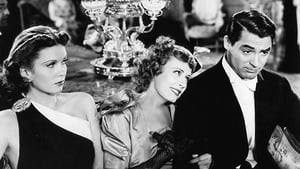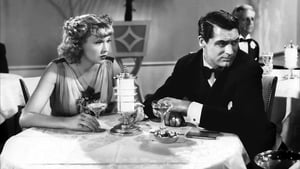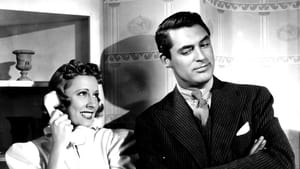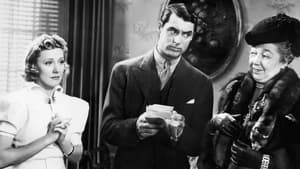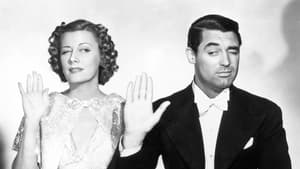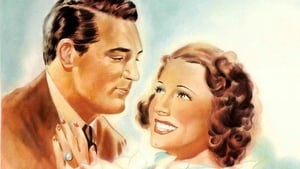Contact: [email protected]
Video Sources 0 Views
- Watch trailer
- The Awful Truth

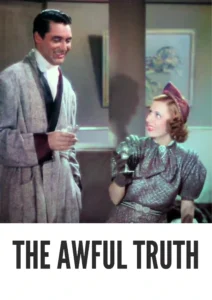
Synopsis
Table of Contents
ToggleReview: In The Awful Truth (1937) – A Classic Screwball Comedy Rediscovered in Vivid Color

Introduction
“In The Awful Truth” (1937) stands as a shining example of the timeless charm and wit of the screwball comedy genre. In this article, we’ll explore the significance of this early colored film, examining its impact on audiences and its enduring legacy in the world of romantic comedy.
Check The Full Colorized Movies List
Check Our Colorized Movies Trailer Channel
Understanding In The Awful Truth 1937: Director, Cast, and Genre
Directed by the renowned Leo McCarey, “In The Awful Truth” (1937) showcases his knack for crafting witty and sophisticated comedies that delight audiences of all ages. The film boasts a stellar cast, led by the incomparable Cary Grant and Irene Dunne, whose sparkling chemistry lights up the screen with every exchange. Blending elements of romance, farce, and satire, “In The Awful Truth” (1937) offers a delightful escape into a world of marital mishaps and romantic misunderstandings.
Exploring the World of In The Awful Truth 1937: Plot and Characters
“At its heart, “In The Awful Truth” (1937) follows the misadventures of a married couple, played by Cary Grant and Irene Dunne, whose relationship unravels in a series of hilarious and heartwarming escapades. As they navigate the pitfalls of divorce and deception, they discover the true meaning of love and forgiveness in the most unexpected of places. Along the way, they encounter a colorful cast of characters, each more eccentric than the last, who add to the film’s comedic charm and emotional depth.
The Art of Film Colorization
Film colorization serves as a transformative tool that allows filmmakers to breathe new life into classic movies, enhancing their visual appeal and captivating audiences with vibrant hues. By digitally adding color to black and white films, colorization opens up new possibilities for storytelling and allows viewers to experience familiar stories in a fresh and exciting way.
Early Colored Films: A Brief History
The history of colored films traces its roots back to the early days of cinema, with filmmakers experimenting with various techniques to add color to their creations. From hand-painted frames to early Technicolor processes, the evolution of colored film has been marked by innovation and experimentation, paving the way for the development of modern colorization techniques that continue to captivate audiences to this day.
In The Awful Truth 1937 and Its Early Colored Version
The decision to release “In The Awful Truth” (1937) in a colorized format was met with both excitement and trepidation. While some welcomed the opportunity to experience the film in vibrant color, others expressed concerns about the potential impact on its visual aesthetic. Nevertheless, the early colored version of “In The Awful Truth” (1937) offers viewers a fresh perspective on the timeless tale of love and misunderstanding, enhancing its comedic charm and emotional resonance.
The Debate Over Film Colorization
The debate over film colorization is a complex and ongoing issue, with passionate arguments on both sides of the divide. Proponents argue that colorization breathes new life into classic movies and introduces them to a new generation of viewers, while detractors maintain that it compromises the artistic integrity of the original work and diminishes its historical significance. As the debate rages on, filmmakers and audiences alike are left to ponder the merits and drawbacks of colorization in the ever-evolving landscape of cinema.
Examining In The Awful Truth 1937 as an Early Colored Film
As with any colorized classic, the impact of colorization on “In The Awful Truth” (1937) is a matter of personal interpretation. Some may argue that it enhances the film’s visual appeal and immerses viewers in its world, while others may feel that it detracts from the stark beauty of the original black and white version. Regardless of one’s stance on the issue, there’s no denying the enduring power of “In The Awful Truth” (1937) as a timeless comedy that continues to entertain and delight audiences around the world.
Influence and Legacy: In The Awful Truth 1937’s Impact on Cinema
“In The Awful Truth” (1937) has left an indelible mark on the world of cinema, inspiring countless filmmakers and captivating audiences with its timeless humor and sparkling wit. From its unforgettable performances to its razor-sharp dialogue, the film continues to resonate with viewers of all ages, reaffirming its status as a beloved classic of the romantic comedy genre.
Director’s Cinematic Legacy: Beyond In The Awful Truth 1937
Leo McCarey’s influence extends far beyond “In The Awful Truth” (1937), with a diverse body of work that continues to captivate audiences around the globe. From “Duck Soup” to “An Affair to Remember,” McCarey’s films are celebrated for their wit, charm, and heart, solidifying his legacy as one of the preeminent directors of Hollywood’s Golden Age. Through his groundbreaking work, McCarey has left an indelible imprint on the world of cinema, inspiring generations of filmmakers to follow in his footsteps.
Themes Explored in In The Awful Truth 1937
“In The Awful Truth” (1937) explores a myriad of themes, from the complexities of love and marriage to the absurdity of human behavior. Through its sharp satire and witty repartee, the film invites viewers to laugh at the foibles of human nature and celebrate the enduring power of laughter to heal the heart and soothe the soul. As audiences immerse themselves in the world of “In The Awful Truth” (1937), they are reminded of the universal truths that bind us together and the timeless appeal of a good old-fashioned comedy.
Reception and Controversy Surrounding In The Awful Truth 1937
Upon its release, “In The Awful Truth” (1937) received widespread critical acclaim, with many praising its razor-sharp wit, delightful performances, and clever storytelling. However, the decision to release the film in a colorized format sparked debate among purists, reigniting the age-old discussion surrounding film preservation and artistic integrity. Despite the controversy, “In The Awful Truth” (1937) remains a beloved classic that continues to entertain and inspire audiences of all ages, reaffirming its status as a timeless masterpiece of the romantic comedy genre.
Where to Watch In The Awful Truth 1937 Online
For those eager to experience the timeless charm of “In The Awful Truth” (1937), the film is readily available on popular streaming platforms such as Netflix, Amazon Prime, and Hulu. Whether you choose to watch it in its original black and white format or the early colored version, “In The Awful Truth” (1937) promises to delight and entertain with its infectious humor and timeless appeal.
FAQs About In The Awful Truth 1937
Q: Is “In The Awful Truth” (1937) based on a true story? A: No, “In The Awful Truth” (1937) is a fictional tale crafted by screenwriters Vina Delmar and Sidney Buchman, who drew inspiration from their own experiences and observations of human relationships.
Q: Who are the main actors in “In The Awful Truth” (1937)? A: “In The Awful Truth” (1937) features a stellar cast led by the incomparable Cary Grant and Irene Dunne, whose on-screen chemistry and comedic timing are a joy to behold.
Q: What awards did “In The Awful Truth” (1937) win? A: “In The Awful Truth” (1937) was nominated for six Academy Awards, including Best Picture, Best Director, and Best Actor for Cary Grant. While it did not win in any category, its impact on the world of cinema cannot be overstated.
Q: Why was “In The Awful Truth” (1937) released in a colorized format? A: The decision to release “In The Awful Truth” (1937) in color was made to introduce the film to a new generation of viewers and enhance its visual appeal for modern audiences. While the choice to colorize the film sparked debate among purists, it ultimately allowed “In The Awful Truth” (1937) to reach a wider audience and ensure its continued relevance in the annals of cinematic history.
Conclusion
“In The Awful Truth” (1937) remains a timeless classic that continues to captivate audiences with its irresistible charm and timeless humor. Whether viewed in its original black and white format or the early colored version, the film serves as a shining example of the enduring power of comedy to entertain, enlighten, and inspire. So, whether you’re a die-hard fan of classic cinema or a newcomer to the world of screwball comedy, take a moment to experience the magic of “In The Awful Truth” (1937) and discover why it remains a beloved favorite among audiences of all ages.
